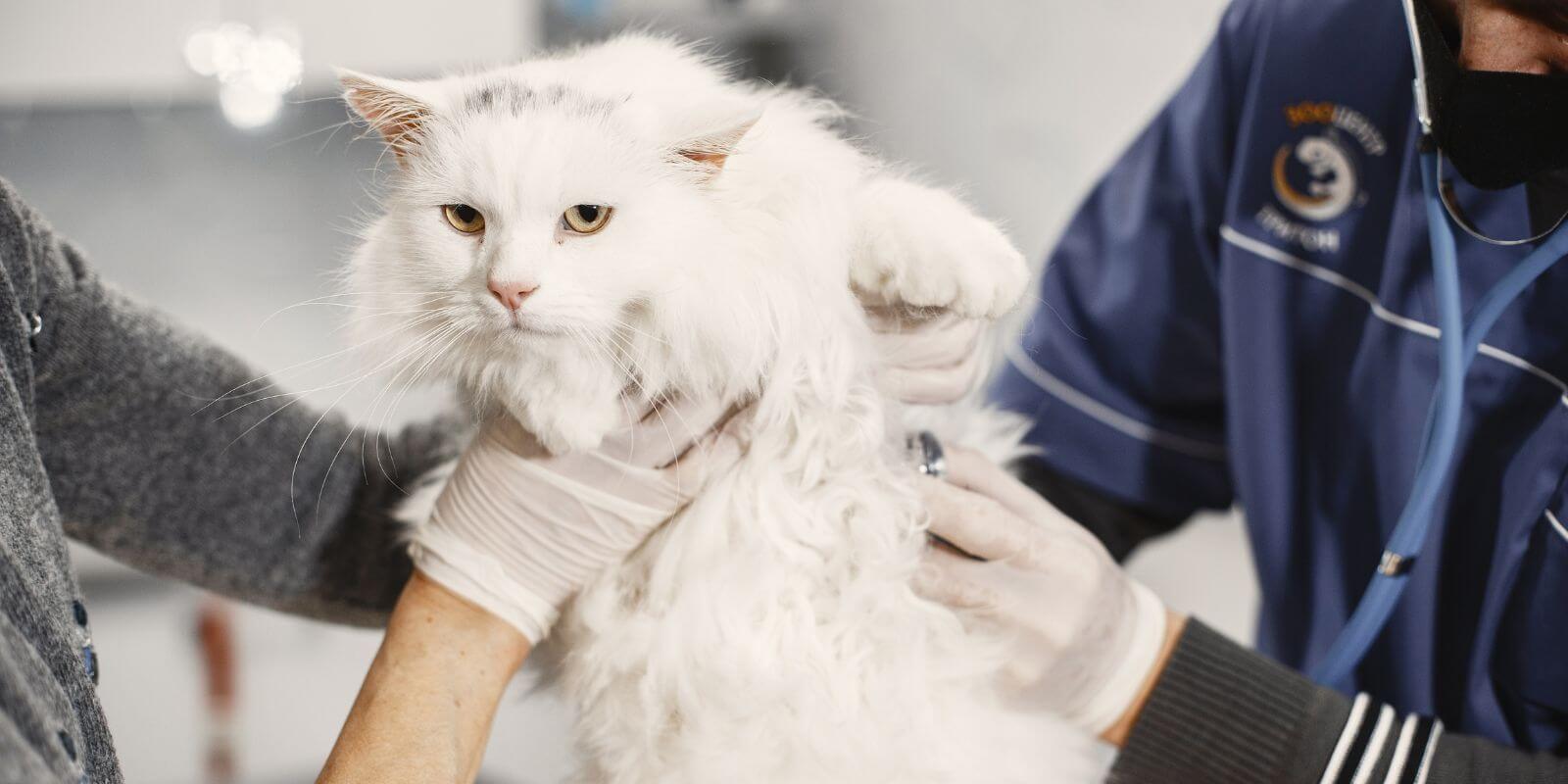You love your furry friend – but you don’t always love the little friends they bring with them. Whether it’s ticks, fleas, or some other pest, these critters are a huge pain for any cat owner.
If you have a cat, you best be on the lookout for a common type of pest: ear mites. These little arachnids can cause all types of discomfort and health issues for your pet.
In this guide, learn the signs and symptoms of ear mites in cats and, most importantly, how to treat them.
What Are Ear Mites?
Ear mites (“otodectes cynotis”) are common pests that live on cats, dogs, and other types of animals and feed on piercing the skin. Ear mites typically live in the ear canal but can also live on the skin around the ears or on other parts of the body. This can cause extreme itching and other uncomfortable symptoms.
What Causes Ear Mites in Cats?
Ear mites are typically spread via direct contact with another infested animal and are highly contagious. Cats often become infested after attending boarding facilities or daycare, spending time outdoors, or coming into contact with another infected animal. Sometimes cats can contract ear mites from contaminated grooming tools and tables, or via infested bedding.
If your cat has come into contact with any of the above or has spent time with other animals that you suspect might have ear mites, it's recommended that you inspect your cat’s ears and fur for mites.
How to Check Your Cat for Eat Mites

There are a few steps you can take to check if your cat has ear mites. However, since ear mites are hard to spot with the naked eye, it’s always recommended that you seek out a professional diagnosis before deciding to treat the problem.
1. Notice your cat’s behaviour
If your cat appears to be scratching their ears a lot, shaking their head or has developed red or inflamed ears, these could be signs that they have an infection.
An ear mites infection can cause your cat to be uncomfortable or act unusual, so paying attention to their behaviour can let you know that something is wrong.
2. Check for signs and symptoms
Inspect your cat’s ears and fur for signs of ear mites. You might see them as white “dust” or specks, though they can be very difficult to see.
Some other signs that your cat might have ear mites are if they have redness around the ears, sores or hair loss from scratching, a foul odour, or a “crumbly” substance around their ears.
3. Contact your veterinarian
You might not be able to tell if your cat has ear mites, even if they are exhibiting some of the symptoms above. Sometimes this irritation can be caused by other types of infections or allergies, so the only way to know for sure is to get a professional diagnosis.
Contact a veterinarian and inform them that you think your cat might have ear mites. Depending on the information you provide, they might decide to schedule an examination.
The veterinarian will begin by examining the external ear canal and the surrounding area. If the vet suspects ear mites, they might use a cotton swab to gently collect a sample of ear wax and debris from the cat's ear canal. This sample can then be examined under a microscope to confirm the presence of ear mites.
Ear mite exams and treatment are covered under most pet insurance policies. This can help reduce the out-of-pocket costs for veterinary care.
What Are The Signs of Ear Mites in Cats?
Ear mites are barely visible to the human eye. You might see them as very small white specks against dark fur, but they are otherwise difficult to see. That said, there are other signs of ear mites in cats:
- Small white mites (difficult to spot)
- Redness around the ears
- Bumps or rash around the ears
- Shaking or stretching of the ears
- Dry, crumbly substance around the ears
- Foul smelling odour
- Pus
- Wax buildup around the ears
- Inflammation
- Sores or hair loss from scratching
If your cat appears to have any discomfort or discolouration around the ears, it might be worth scheduling a veterinary visit to determine whether they have ear mites.
What Happens if Ear Mites Are Left Untreated?

Ear mite bites puncture the skin, causing itching, swelling, and discomfort. If left untreated, this can lead to bacterial infections, swelling of the ear canal, and even deafness.
Ear mites can travel to other areas of the body, causing additional itching, rashes, and infections. Also, leaving ear mites untreated can lead to your pet infecting other animals inside and outside the home.
How to Treat Ear Mites in Cats

Ear mites are highly treatable. Systemic and topical treatments for ear mites are available, typically with a prescription. Here are the most common types of treatments for ear mites in cats:
1. Anti-parasitic medication
If your veterinarian diagnoses your cat with ear mites, an anti-parasitic medication (for example, selamectin or moxidectin) will likely be prescribed. These are often available in either topical or oral form. The vet will likely clean your cat’s ears and administer the first dose of the medication in-office. Your vet might also prescribe medication for any other household pets to prevent the spread.
2. Antibiotics
If your cat has a severe infection, your vet might also prescribe a course of antibiotics or anti-fungal medication. If there are any secondary infections, your vet might recommend returning in a week or two to make sure the mites are gone and all symptoms have resolved.
3. At-home remedies are not recommended
While a quick Google for “how to treat ear mites at home” will generate tons of results, home remedies are not recommended. Most at-home treatments do not kill the eggs of the mites, so the mites can keep coming back. Though it might look like the mites are gone, the infestation will come back when the eggs hatch.
Some at-home treatments may provide short-term relief until you are able to visit the vet. For example, adding a few drops of baby oil into the affected ear may smother the mites for a short period of time. However, professional treatment is always recommended.
How Do Cats Get Ear Mites?

Cats can get ear mites from a lot of different places, as these tiny parasites are highly contagious. They are very common, particularly those that spend time outdoors or interact with other animals.
Here are a few common ways that cats can get ear mites:
- Direct contact: Ear mites are easily transmitted from one cat to another through direct contact. Cats that come into close contact with an infected cat, such as during play, grooming, or fighting, can easily pick up ear mites.
- Contact with infested items: Ear mites can survive for a short period off the host. If an infected cat has been in contact with items like bedding, toys, or furniture, the mites can transfer to these objects. Another cat that comes into contact with these infested items could then pick up the mites.
- Mother to kittens: Kittens can acquire ear mites from their mother, especially during nursing or close contact. If the mother cat has ear mites, the mites can spread to the kittens while they are still young.
- Outdoor exposure: Cats that spend time outdoors have a higher risk of encountering ear mites, as they can come into contact with other infested animals like stray cats or wildlife.
- Multi-pet household: In households with multiple pets, if one cat becomes infested with ear mites, there's a possibility of the mites spreading to other cats within the same environment.
- Shelter environments: Cats in shelters or rescue facilities are at a higher risk of ear mite infestations due to the close quarters and potential exposure to other infested animals.
How to Prevent Ear Mites in Cats

The best way to prevent ear mites is to schedule regular check-ups and ear cleanings. This should include regular grooming appointments as well as veterinary health checks. Examine your cat’s fur, ears, eyes, etc. on a regular basis in order to notice any pests as early as possible.
Your vet might also recommend parasite prevention products to keep mites, fleas, worms, and other types of pests at bay.
It is also a good idea to clean your pet’s pen, bedding, toys, etc. on a regular basis to reduce the risk of an infestation. If your pet sleeps on your bed or furniture, clean these often as well.
Can Humans Catch Ear Mites From Cats?
While it's quite rare for ear mites to infest humans, it is possible in some cases, although the mites don't establish a long-term presence on human hosts.
If a person comes into contact with an infested cat, especially if the infestation is severe, there's a small chance that a few mites could transfer to the person's skin. However, these mites are not well-suited for living on humans, and they typically die off within a short period without causing a lasting infestation.
Treat Mites Early With The Help of Pet Insurance
We believe Furkin Pet Insurance helps pet owners' financial security by mitigating the costs of veterinary care expenses due to unexpected illnesses (such as ear mites), injuries, and other cat health issues. Pet insurance is one of the best ways to reduce your financial stress when deciding on the optimal veterinary care.
Concerned that your cat might have ear mites? Schedule an appointment with your veterinarian as soon as possible. In the meantime, contact Furkin Pet Insurance for more information about our comprehensive pet insurance plans.



